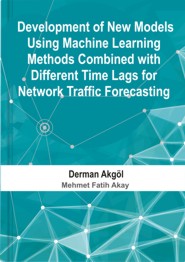LibraryPhysical Science & MathEngineering
Development of New Models Using Machine Learning Methods Combined with Different Time Lags for Network Traffic Forecasting
| Institution: | Cukurova University |
|---|---|
| Advisor(s): | Mehmet Fatih Akay |
| Degree: | MSc |
| Year: | 2016 |
| Volume: | 112 pages |
| ISBN-10: | 1612334601 |
| ISBN-13: | 9781612334608 |
Abstract
The purpose of this thesis is to forecast the amount of network traffic in Transmission Control Protocol/Internet Protocol (TCP/IP) -based networks by using different time lags and various machine learning methods including Support Vector Machines (SVM), Multilayer Perceptron (MLP), Radial Basis Function (RBF) Neural Network, M5P (a decision tree with linear regression functions at the nodes), Random Forest (RF), Random Tree (RT), and Reduced Error Prunning Error (REPTree), and statistical regression methods including Multiple Linear Regression (MLR) and Holt-Winters and compare the performance of statistical and machine learning methods. Two different Internet Service Providers' (ISPs) traffic data have been utilized to build traffic forecasting models. The first 66% of the data sets has been utilized as training sets and the rest has been used as test sets. The performance of the forecasting models for the data sets has been assessed using Mean Absulote Percentage Error (MAPE). The results show that SVM and M5P based models usually perform better than the ones obtained by the other methods.

